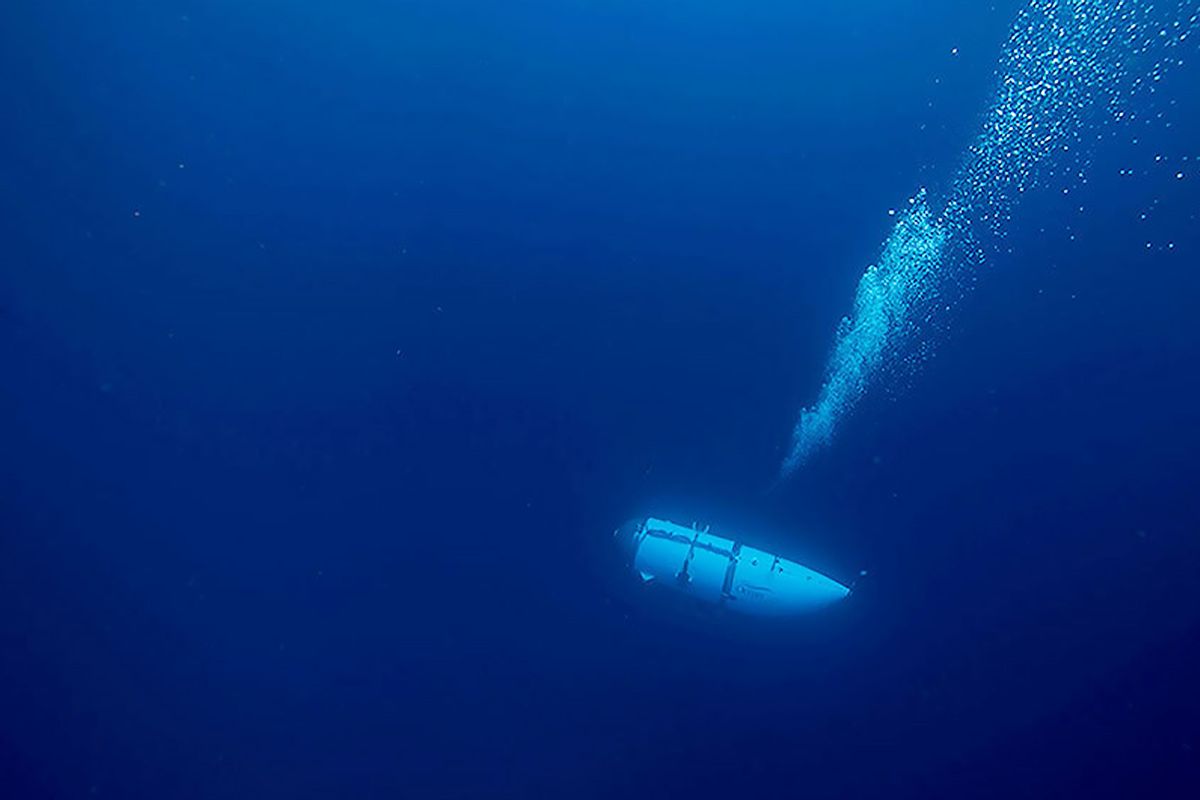The search for the missing submersible Titan that disappeared in an attempt to view the RMS Titanic has concluded. On Thursday, the U.S. Coastguard hosted a press conference announcing that "five major pieces of debris" found were from the lost vessel, including its tail cone. The wreckage indicates that there was an implosion, or a violent collapse inward, that was "consistent with catastrophic loss of the pressure chamber."
"The debris is consistent with a catastrophic implosion of the vessel," Rear Admiral John Mauger said during the press conference.
The news came right after OceanGate, the company that operated the submersible that went missing on Sunday, announced in a statement that they believed all five passengers were dead. On Thursday morning, news broke that one of the remote-controlled search vehicles located a "debris field" nearly 1,600 feet from the bow of the Titanic after hours of being deployed.
The OceanGate statement read:
"This is an extremely sad time for our dedicated employees who are exhausted and grieving deeply over this loss. The entire OceanGate family is deeply grateful for the countless men and women from multiple organizations of the international community who expedited wide-ranging resources and have worked so very hard on this mission. We appreciate their commitment to finding these five explorers, and their days and nights of tireless work in support of our crew and their families.
This is a very sad time for the entire explorer community, and for each of the family members of those lost at sea. We respectfully ask that the privacy of these families be respected during this most painful time."
The five passengers on the missing submersible were Stockton Rush, the chief executive of OceanGate; French maritime expert Paul-Henri Nargeolet; British billionaire Hamish Harding; Pakistani and British billionaire Shahzada Dawood, and his 19-year-old teenage son, Suleman Dawood.
Yesterday, the Coast Guard said that sonar had picked up "banging noises," providing some hope that the submersible was still intact somewhere in the ocean. During the press conference, Rear Admiral John Mauger said "there doesn't appear to be any connection between the noises and the location on the seafloor."
Sonar buoys deployed to search for the missing vessel after it went missing did not pick up sounds of an implosion. This suggests it occurred before the search took place. A trip to see the Titanic wreckage at the bottom of the ocean on OceanGate's 23,000-pound vessel costs $250,000, but the sub itself may not have been properly outfitted for such a deep dive, lacking even some basic equipment. As reported by Forbes, "If the hull of the Titan did fail, it may take a long time—if ever—to diagnose what exactly went wrong."
Dr. Nicolai Roterman, a deep-sea ecologist and lecturer in marine biology at the University of Portsmouth, told Forbes, "If there was any kind of hull breach, the occupants would succumb to the ocean in a near instant."
This result was predicted by many in the deep sea diving industry. For example, the Marine Technology Society warned of a catastrophic event for years.
"This letter is sent on behalf of our industry members who have collectively expressed unanimous concern regarding the development of TITAN and the planned Titanic Expedition," the Society stated in a letter from March 2018. "Our apprehension is that the current experimental approach adopted by Oceangate could result in negative outcomes (from minor to catastrophic) that would have serious consequences for everyone in the industry."
In the press conference, authorities said they will continue to try and piece together a timeline of events. However, no further press conferences are scheduled.
"I know there's a lot of questions about how, why, when this happened," Mauger said. "That's going to be, I'm sure, the focus of future review. Right now, we're focused on documenting the scene."



Shares